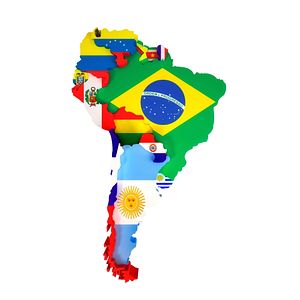Xi Jinping departed from Beijing on Sunday, heading to South America for a four-country tour. Xi’s trip is timed to coincide with the BRICS summit to be held in Brazil from July 15 to 16. Xi will also use his time in Brazil for bilateral meetings with Brazilian President Dilma Rouseff and Brazilian parliamentary leaders, according to Xinhua, before paying visits to Venezuela, Cuba, and Argentina.
This year’s BRICS summit, the sixth such meeting of the heads of state of Brazil, Russia, India, China, and South Africa, is expected to officially launch the BRICS development bank. Notably, the new institution is expected to be headquartered in Shanghai according to Reuters, a sign of China’s influence in the loosely aligned group of developing nations. The new development bank seeks to provide an alternative to the Western-dominated World Bank and International Monetary Fund. It will offer loans to developing countries as well as assistance to any BRICS nation that requires it.
The BRICS summit will also be the first meeting between Xi Jinping and new Indian Prime Minister Narendra Modi. China has been optimistic about expanding that relationship under Modi, hoping that Modi’s emphasis on economic development will work in China’s favor. However, Modi has also emphasized developing and exerting stronger Indian control over the disputed territory of Arunachal Pradesh, hinting that the border dispute will continue to cause friction between China and India. The first face-to-face meeting between Xi and Modi will help set the tone for future China-India relations under their respective governments. In this context, it’s especially interesting to note that India seems to harbor the strongest concerns about locating the new development bank in Shanghai, lest Beijing begin to monopolize the new institution.
While the BRICS summit provides the impetus for the trip, China also has an increasing interest in South America for its own sake. Xi’s trip to South America and the Caribbean lets him visit several important political partners for the first time since assuming office. Last year, Xi’s visit to the region focused on Central America rather than South America. This 2014 visit will have Xi stop in three out of four of Beijing’s “strategic partners” in South America: Venezuela, Brazil, and Argentina (with the fourth being Peru). Xi will also stop in Cuba, a long-time political friend of China’s due to their common bond as states governed by their respective Communist Parties.
China’s relationship with South America is largely economic. China is a major trade partner for many South American countries, and also imports natural resources (most notably oil, in the case of Venezuela) and agricultural products (especially soybeans) from its trading partners in the region. However, China is also seeking to play an expanded role in helping build up South American infrastructure, in a bid to replicate the reputation China has gained in Africa for building roads, railways, and public buildings like schools, hospitals, and sports arenas.
Earlier this year, the unveiling of a new dialogue mechanism between China and the Community of Latin America and Caribbean States (CELAC) promised to bring China and Latin America closer together politically as well. Xi will attend the first meeting of this China-CELAC forum during his time in Brazil. The new forum will be the first comprehensive platform for political engagement between China and Latin America, helping provide regular contacts between Chinese and Latin American leaders.

































